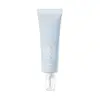What's inside
What's inside
 Key Ingredients
Key Ingredients

 Benefits
Benefits

 Concerns
Concerns

No concerns
 Ingredients Side-by-side
Ingredients Side-by-side

Bambusa Vulgaris Water
Skin Conditioning1,2-Hexanediol
Skin ConditioningPropanediol
SolventWater
Skin ConditioningGlycerin
HumectantHydrogenated Polydecene
EmollientC14-22 Alcohols
Emulsion StabilisingC12-20 Alkyl Glucoside
EmulsifyingCaprylic/Capric Triglyceride
MaskingCodium Fragile Extract
Skin ConditioningPalmaria Palmata Extract
Skin ProtectingChondrus Crispus Extract
Skin ConditioningSargassum Pallidum Extract
AntioxidantButylene Glycol
HumectantHyaluronic Acid
HumectantHydrolyzed Hyaluronic Acid
HumectantSodium Hyaluronate
HumectantPanthenol
Skin ConditioningVinyldimethicone
Cetyl Alcohol
EmollientCarbomer
Emulsion StabilisingTromethamine
BufferingSodium Dna
Skin ConditioningHydrogenated Lecithin
EmulsifyingDextrin
AbsorbentGardenia Florida Fruit Extract
Skin ConditioningPolyglutamic Acid
Skin ConditioningHydrolyzed Sodium Hyaluronate
Skin ConditioningHydroxypropyltrimonium Hyaluronate
Potassium Hyaluronate
Skin ConditioningSodium Hyaluronate Crosspolymer
HumectantPentylene Glycol
Skin ConditioningSodium Acetylated Hyaluronate
HumectantGuaiazulene
AntimicrobialAgave Tequilana Leaf Extract
AstringentSodium Retinoyl Hyaluronate
Zinc Hydrolyzed Hyaluronate
HumectantDimethylsilanol Hyaluronate
HumectantSodium Benzoate
MaskingAscorbyl Propyl Hyaluronate
Skin ConditioningAscorbylpropyl Hydrolyzed Hyaluronate
HumectantCaulerpa Lentillifera Extract
Ethylhexylglycerin
Skin ConditioningDisodium EDTA
Bambusa Vulgaris Water, 1,2-Hexanediol, Propanediol, Water, Glycerin, Hydrogenated Polydecene, C14-22 Alcohols, C12-20 Alkyl Glucoside, Caprylic/Capric Triglyceride, Codium Fragile Extract, Palmaria Palmata Extract, Chondrus Crispus Extract, Sargassum Pallidum Extract, Butylene Glycol, Hyaluronic Acid, Hydrolyzed Hyaluronic Acid, Sodium Hyaluronate, Panthenol, Vinyldimethicone, Cetyl Alcohol, Carbomer, Tromethamine, Sodium Dna, Hydrogenated Lecithin, Dextrin, Gardenia Florida Fruit Extract, Polyglutamic Acid, Hydrolyzed Sodium Hyaluronate, Hydroxypropyltrimonium Hyaluronate, Potassium Hyaluronate, Sodium Hyaluronate Crosspolymer, Pentylene Glycol, Sodium Acetylated Hyaluronate, Guaiazulene, Agave Tequilana Leaf Extract, Sodium Retinoyl Hyaluronate, Zinc Hydrolyzed Hyaluronate, Dimethylsilanol Hyaluronate, Sodium Benzoate, Ascorbyl Propyl Hyaluronate, Ascorbylpropyl Hydrolyzed Hyaluronate, Caulerpa Lentillifera Extract, Ethylhexylglycerin, Disodium EDTA
Water
Skin ConditioningGlycerin
HumectantButyl Methoxydibenzoylmethane
UV AbsorberEthylhexyl Methoxycinnamate
UV AbsorberButylene Glycol
HumectantOctocrylene
UV AbsorberEthylhexyl Salicylate
UV AbsorberHomosalate
Skin ConditioningPolyacrylate Crosspolymer-11
Emulsion StabilisingCentella Asiatica Extract
CleansingPhenoxyethanol
PreservativeSilica
AbrasiveTrehalose
HumectantLecithin
EmollientTriethylene Glycol
Masking1,2-Hexanediol
Skin Conditioning
 Reviews
Reviews

Ingredients Explained
These ingredients are found in both products.
Ingredients higher up in an ingredient list are typically present in a larger amount.
1,2-Hexanediol is a synthetic liquid and another multi-functional powerhouse.
It is a:
- Humectant, drawing moisture into the skin
- Emollient, helping to soften skin
- Solvent, dispersing and stabilizing formulas
- Preservative booster, enhancing the antimicrobial activity of other preservatives
Butylene Glycol (or BG) is used within cosmetic products for a few different reasons:
Overall, Butylene Glycol is a safe and well-rounded ingredient that works well with other ingredients.
Though this ingredient works well with most skin types, some people with sensitive skin may experience a reaction such as allergic rashes, closed comedones, or itchiness.
Learn more about Butylene GlycolGlycerin is already naturally found in your skin. It helps moisturize and protect your skin.
A study from 2016 found glycerin to be more effective as a humectant than AHAs and hyaluronic acid.
As a humectant, it helps the skin stay hydrated by pulling moisture to your skin. The low molecular weight of glycerin allows it to pull moisture into the deeper layers of your skin.
Hydrated skin improves your skin barrier; Your skin barrier helps protect against irritants and bacteria.
Glycerin has also been found to have antimicrobial and antiviral properties. Due to these properties, glycerin is often used in wound and burn treatments.
In cosmetics, glycerin is usually derived from plants such as soybean or palm. However, it can also be sourced from animals, such as tallow or animal fat.
This ingredient is organic, colorless, odorless, and non-toxic.
Glycerin is the name for this ingredient in American English. British English uses Glycerol/Glycerine.
Learn more about GlycerinWater. It's the most common cosmetic ingredient of all. You'll usually see it at the top of ingredient lists, meaning that it makes up the largest part of the product.
So why is it so popular? Water most often acts as a solvent - this means that it helps dissolve other ingredients into the formulation.
You'll also recognize water as that liquid we all need to stay alive. If you see this, drink a glass of water. Stay hydrated!
Learn more about Water